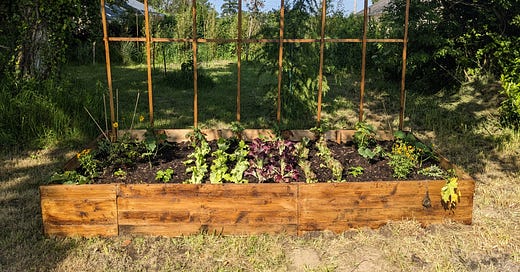The Potager in Bloom – Sunflowers alongside Celery
Slow Living from a French Country Farmhouse & Garden
Dear Reader,
Bonjour from Maison des Marguerites, the last house at the end of a country lane, in ‘the middle of nowhere,’ (as one of out BnB guests recently described the property.) I rather liked that comment, as it does feel that way, and yet we are 10 minutes from the local market town.
This is certainly “France profunde’, hidden France, in a ‘hameau’ in a far corner of the Commune of Chassignolles-en-Berry.
This is a part of France where the weather is never the same two years running. Sometimes it is a warm March, sometimes there are flurries of snow. Last year summer was ‘rain-fest’ and the garden grew rapidly, green and lush (and uncontrollable). This year spring continued grey and wet … the ground literally squelched underfoot. Now we are in the midst of seering heat and drought with no rain in the forecast.
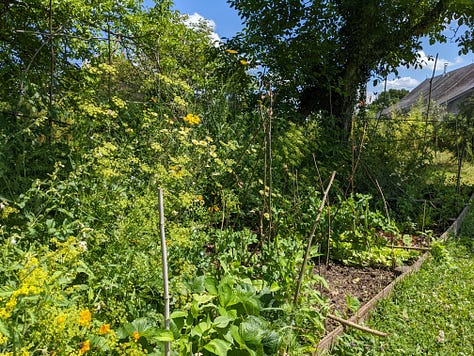
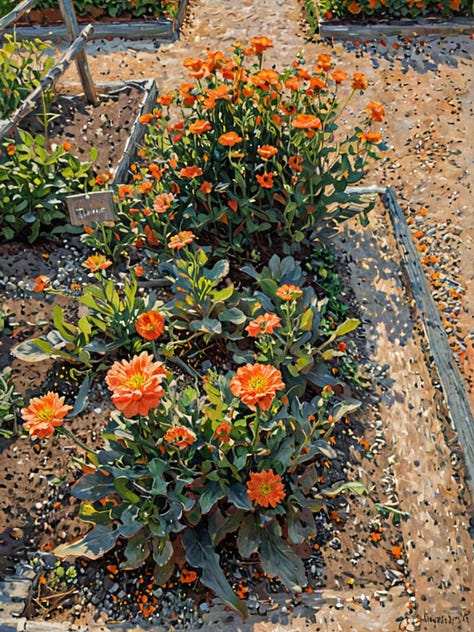
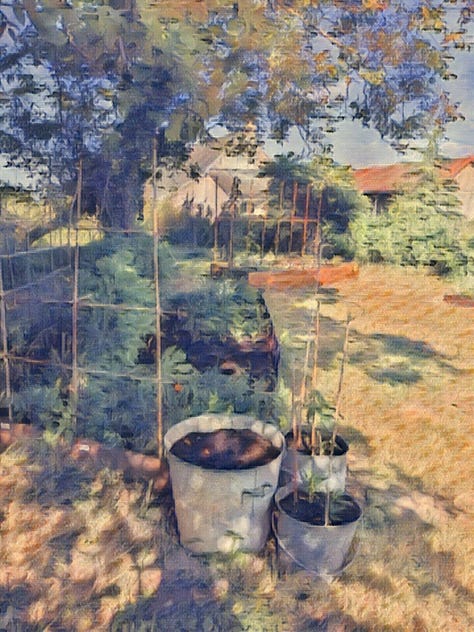
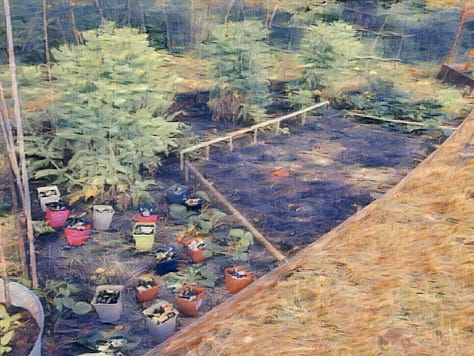
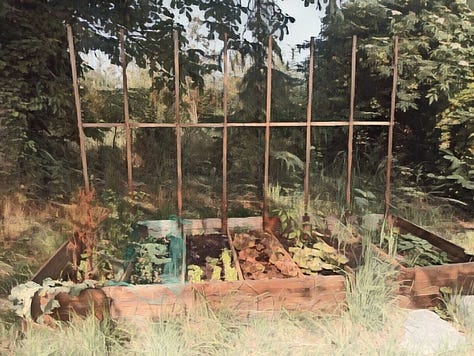
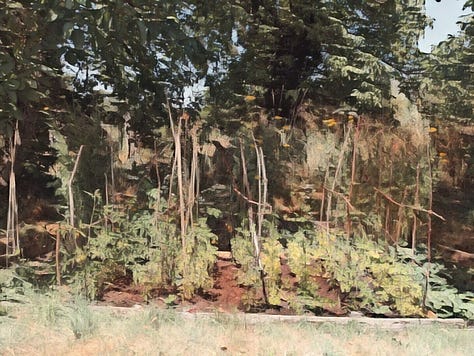
Challenging Weather
This makes gardening a challenge. Yesterday while walking round the garden, deciding on my next jobs I made a few puzzling observations about the aromatic herbs.
Marjoram and Oregano are struggling in the heat , yet they are are Mediterranean plants.
Thyme plants are dying - 4 or 5 have gone dry and crumbled to dust in the heat. Again a Mediterranean plant.
Mint is flourishing in July. I think of it as late season colour, and a herb which likes shady, damp places. Yet it is happier than marjoram, sage and thyme in the heat.
Achillea is the star! It is flowering profusely (white and yellow varieties) in the drought, both in the lawn and as a plant in the border.
Anyone else experienced anything similar? I thought my Mediterranean herbs would fare better in a ‘canicule’ (heat wave).
Disaster in the potager after months of wet weather
The potager worked well in its first two seasons, until disaster in summer 2024, when the wet weather and lack of sunshine meant we had a poor crop - only a few tomatoes and two cucumbers.
This spring we were left with an unrecognisable potager filled with weeds, which had gone rampant, despite the weed suppressant under the potager bed.
There is a definite microclimate at Maison des Marguerites; it is usually breezy when it is still in the village. I think of it as Wuthering Heights!
In May the potager slowly returned to life, and what is usually a quiet rhythm of preparing and watching the salad crop and biodiversity flowers grow instead turned into a major renovation of both our potager beds. We weeded, used old roofing tiles as a weed suppressant, put in wooden dividers to isolate crops and added more soil and compost.
It seemed tough this year, re-building after such a damp, wet summer and winter. I admit I was tempted to abandon it, as with work and the rest of the garden it can occasionally feel overwhelming. If I designed our whole garden again it would be with a mind to how easy or difficult it is to maintain - not just the aesthetics!
Nigel (much beloved husband) made a short video on our channel on You Tube with the story of the re-juvenation of the potager, and I may be a little biased but I think he did a good job. It’s quite short and shows the progression of the potager over time - and the tribulations this spring!
A New Beginning in the Potager: Slow Living in Rural France

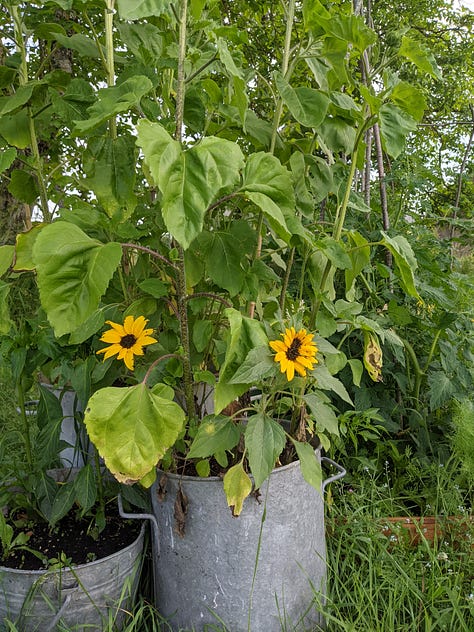

This year the crops include …
We grow tomatoes, peppers, spring onions, radish, parcel, celery, parcel and several varieties of lettuce. This year it was a combination of seed and those tiny plants from the garden centre, and so far so good (despite a heat wave and lack of rain)

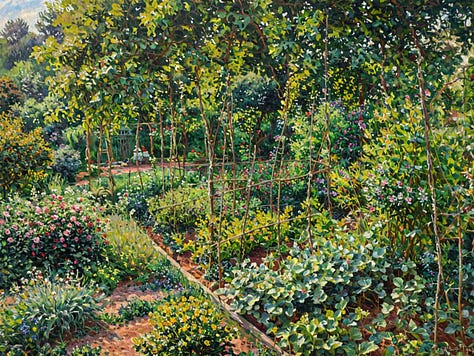
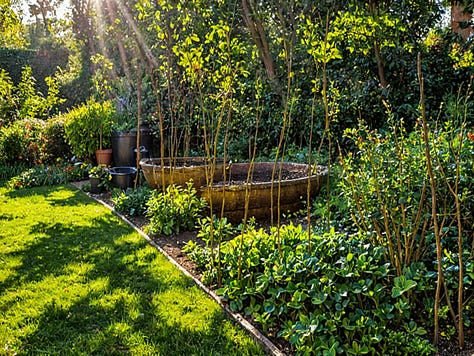
The Design - Simply from Seed.
The flowery border of the potager was inspired by an article in Practical Gardening Magazine many years ago. Sometimes you read something and it catches the attention and this was the case for me as I devoured this article. It was strange for me, as I tend to choose subtle colours in my planting schemes. At one point I remember almost evicting crocosmia from my cottage garden planting (or as my Grandma used to call it montbretia) with its bright orange flowers.
Yet something caught my attention in this garden grown from seed, inspired by a French potager. I grew the garden from seed, pretty much following the plan in my garden in Skipton, North Yorkshire; it was a new build house with an unusually large town garden. I have no photos, but the garden worked well and it made sense to use the design for biodiversity planting around our small potager.
I kept for nearly 30 years, Simply from Seed, written by Ceri Thomas, in Practical Gardening, February 1997. Ceri used the heritage kitchen gardens of Saint-Jean-de-Beauregard as her inspiration.

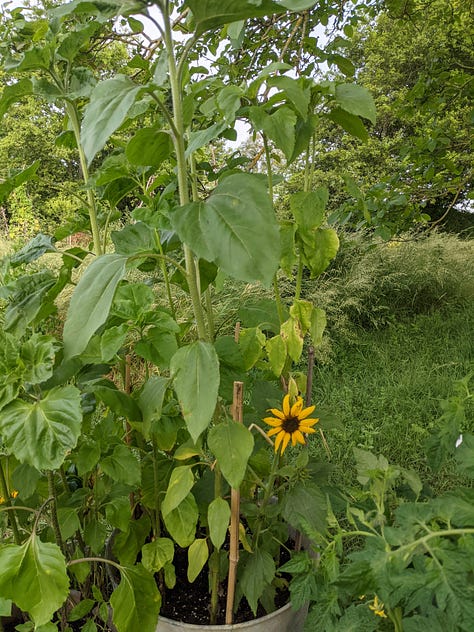

So it fitted to have a French inspired potager - and I extended the design so the flowers surround the salad crops - a new kind of potager. In the article the design was for a flower garden, and didn’t include salad or vegetable crops.
The plan wasn’t just for vegetables and salad, but for it to look beautiful at the same time; to quote the late, great gardener Geof Hamilton, something to “gladden the heart.” I think a display which makes me stand and stare at the flowers, plus a salad crop area is a perfect combination.
So our potager isn’t just for summer salad, but for biodiversity, beauty, and the pleasure of growing plants from seed into a summer array. I always take inspiration from my favourite garden the Prieure d’Orsan in Central France. Some photos of their potager are below.
Ruth's favourite garden Prieure d'Orsan
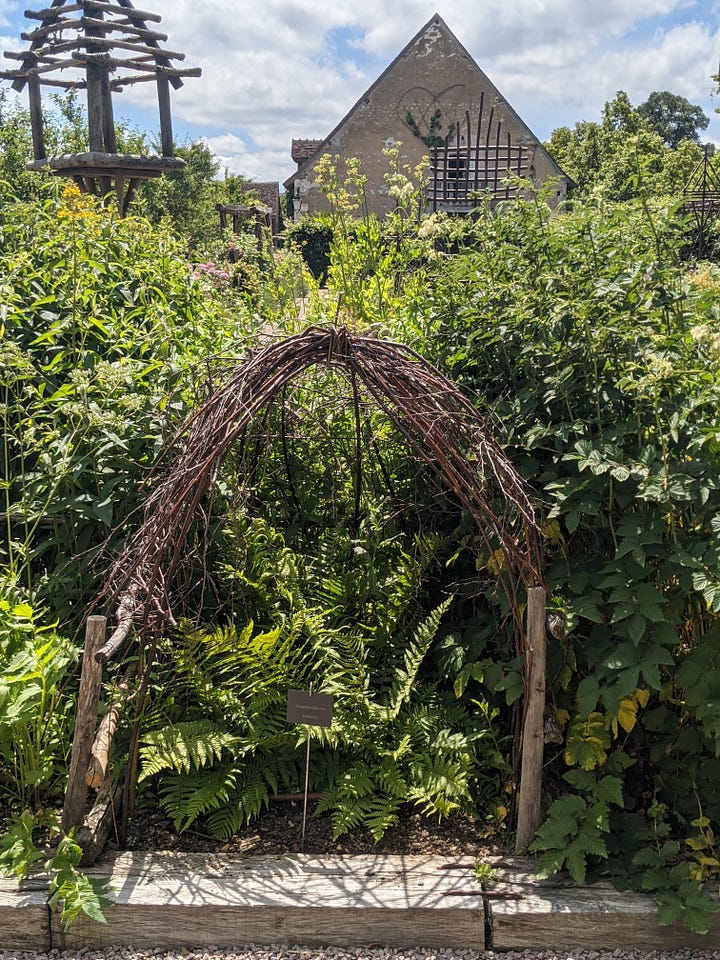
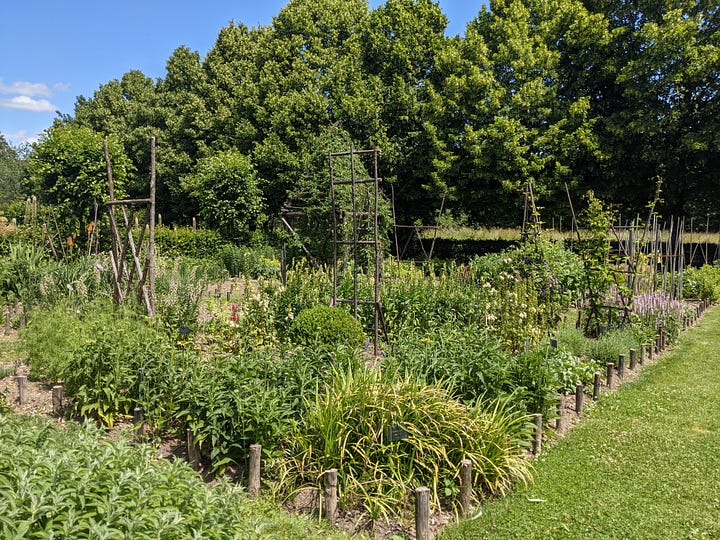
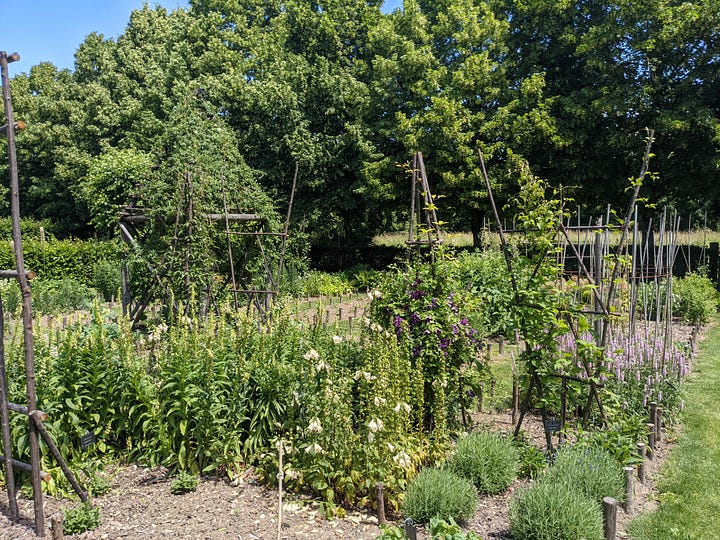

Reflective Moment
What grows easily where you live, even without much attention? How could you let it flourish more this season - in the garden or in life?
What’s the most successful salad or vegetable crop to grow in all weathers in your region?
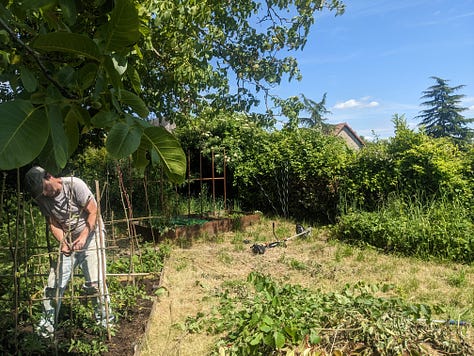
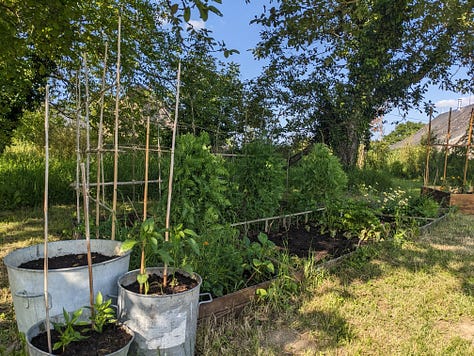

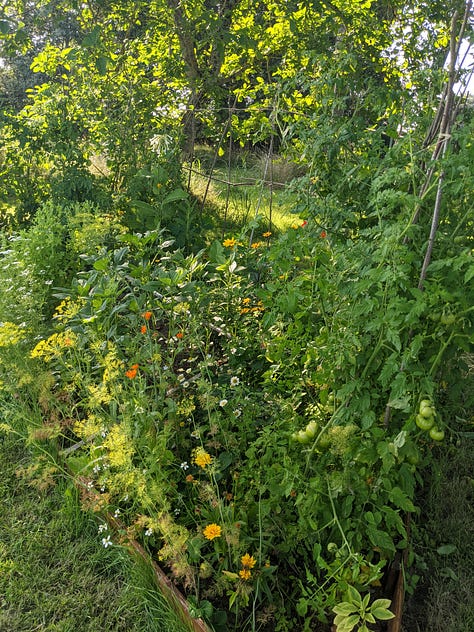
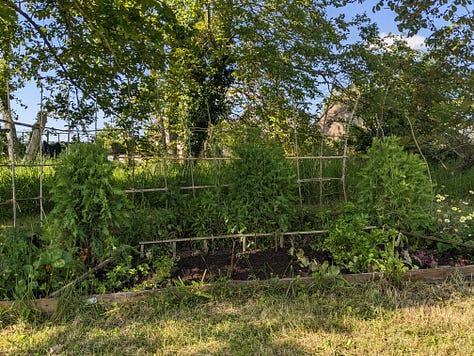
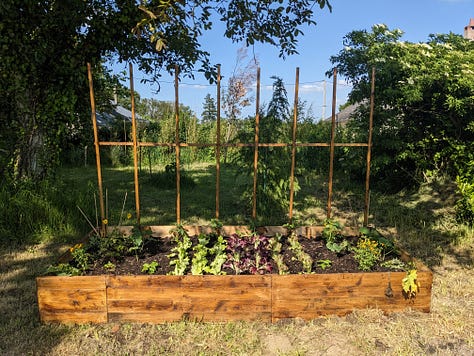
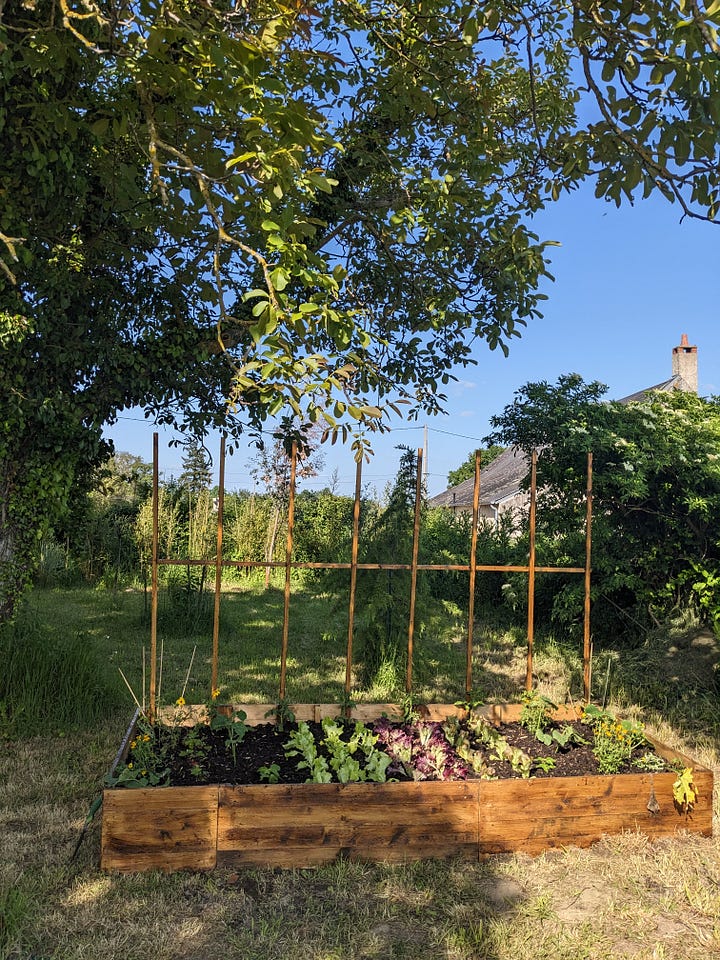
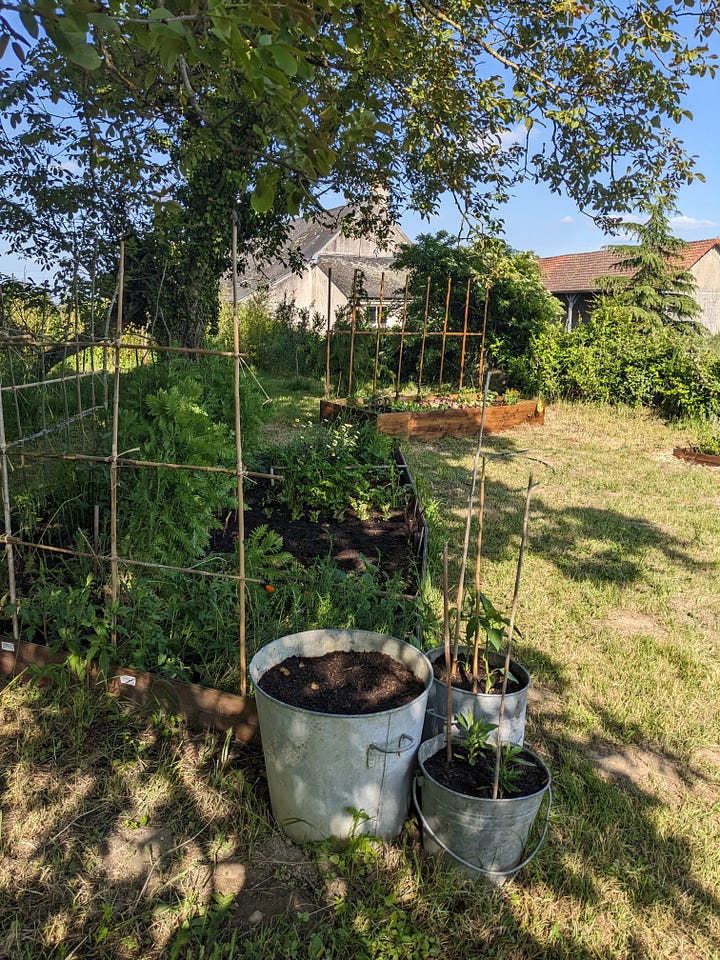
The Potager Plan – Biodiversity with Beauty
A Simple Design
The Central bed: A square or rectangle of productive veg - for lettuce, beans, peas, celery, tomatoes, all practical crops for summer salads.
Biobeds around the sides and back of the central bed surrounding the salad crops. planted densely with insect-attracting flowers and herbs, in a gentle colour scheme of yellow, orange, and white.
Metal tubs: Reclaimed metal farm troughs, filled with sunflowers of varying heights and colours - from classic yellow to dusky bronze.
I extended Ceri’s planting sceme according to what I had available, and added some cuttings from the herb garden. There are French marigolds (calendula), white cosmos, dill, fennel, climbing nasturtiums. I added lots of parsley which grows easily from seed here as ground cover to suppress weeds, and use in recipes.

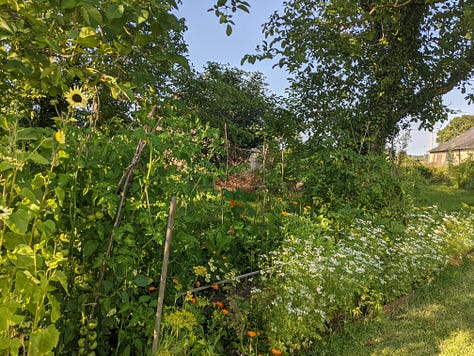
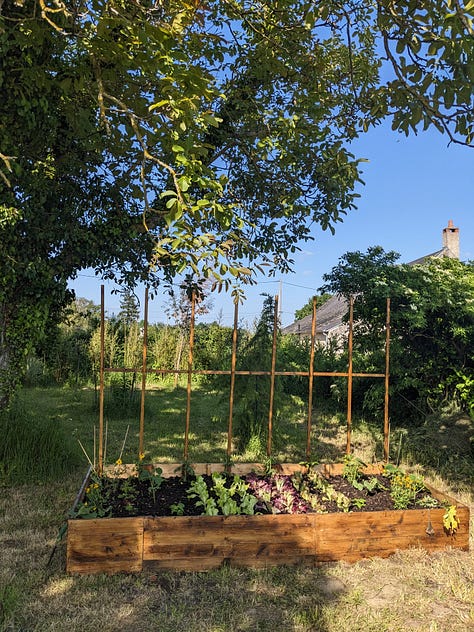
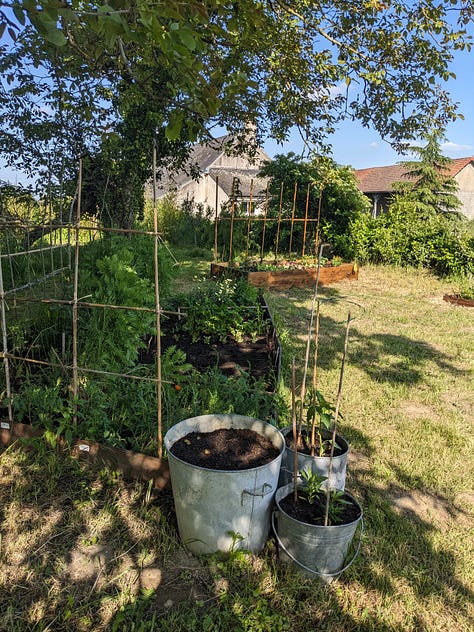
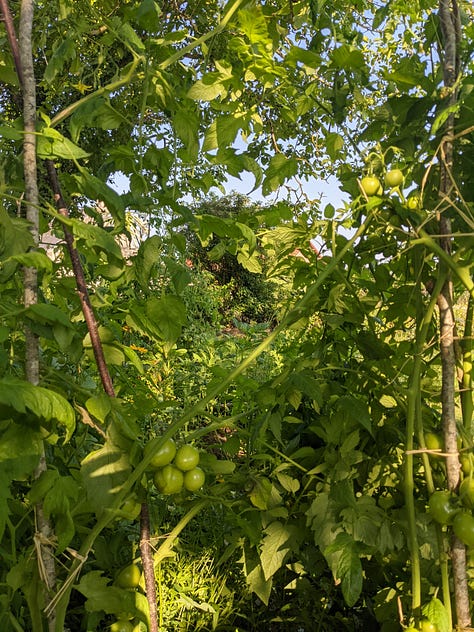
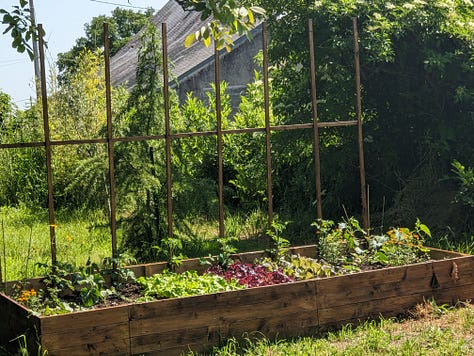
The biobeds provided a pest-repelling decoys, nectar for bees and butterflies and and what I can only describe as an energizing visual display. It’s rather nice to think of the flowers as companion planting, protecting the salad as well as giving a cheerful, bright summer display of flowers.
I also added sunflowers in stainless steel farm containers which we found in the old barn. My daughter bought me a mix of sunflower seeds and it added an extra aspect - cheerfulness to this garden. Tall, dwarf, bright yellow, Bronze, red-tinged, pale lemon, all grown from seed,adding cheerful late summer colour.
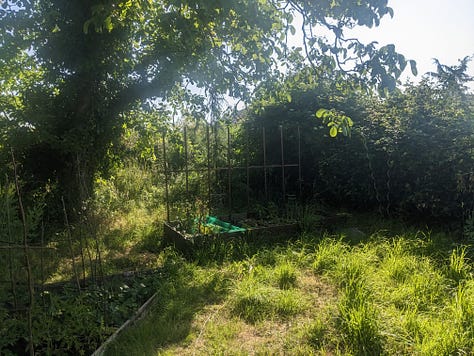
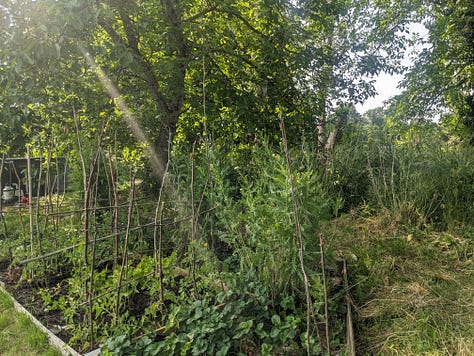
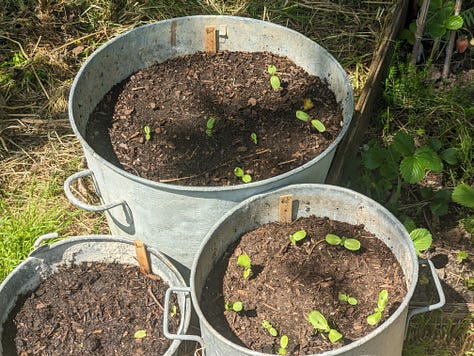
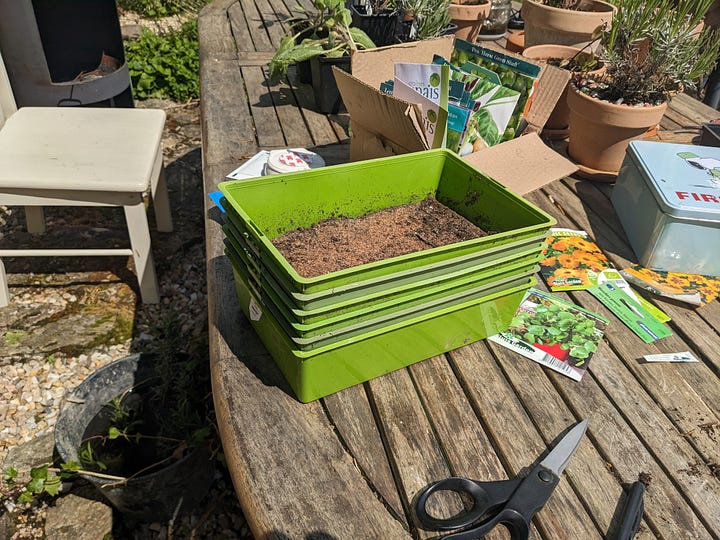

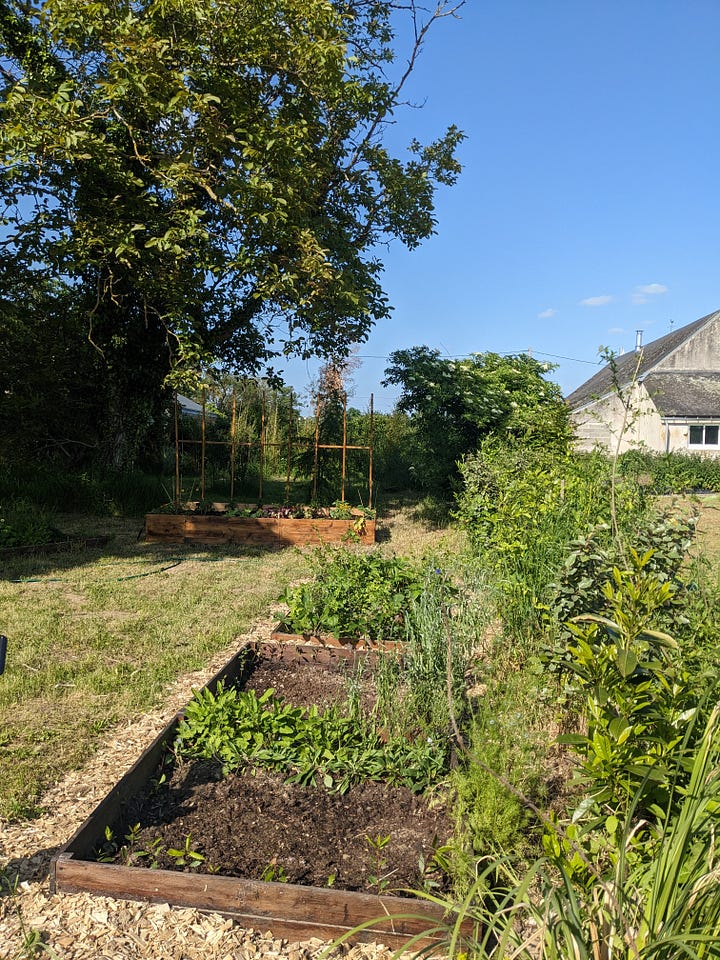
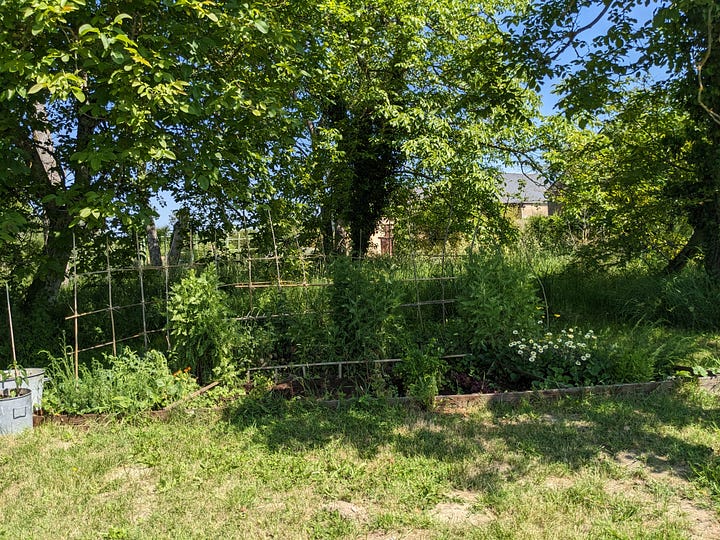
Change in Planting
In the first year I planted a few perennials, with 2 or 3 varieties of everlasting sunflowers, and this worked well initially. I thought it would help to have a skeleton of planting which returned every spring, rather than solely rely on seed grown plants.
They all died after two seasons. I think some plants - echinacea, hardy salvias and everlasting sunflowers struggle with the variability in climate here in the south of the Centre-Val de Loire. There can be hard frosts in winter, and one year the frost lasted several days. Summer can be hot and dry, or wet and grey. You never know what to expect.
Practical Gardening magazine seems to be no longer published, so I shall put some photos of the article here. I note that Ceri Thomas has written other books and articles and I’ve put a link to her work below.
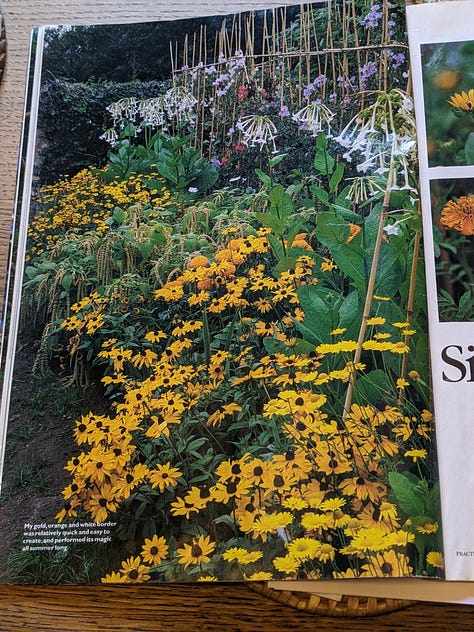
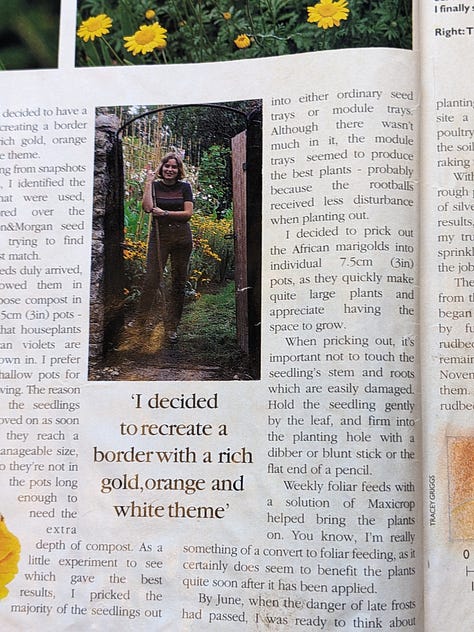
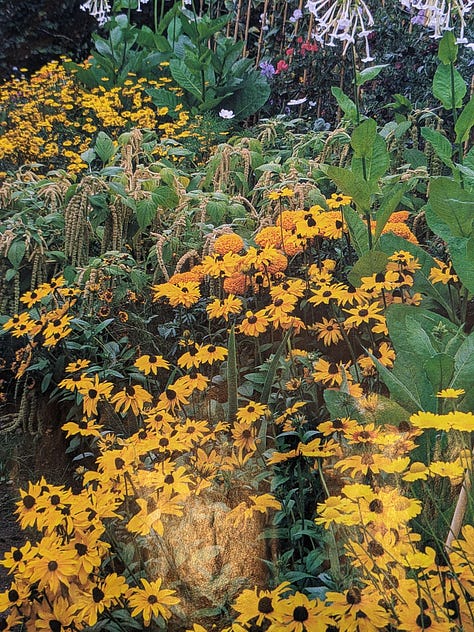
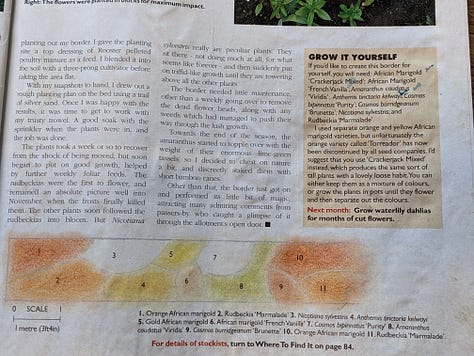

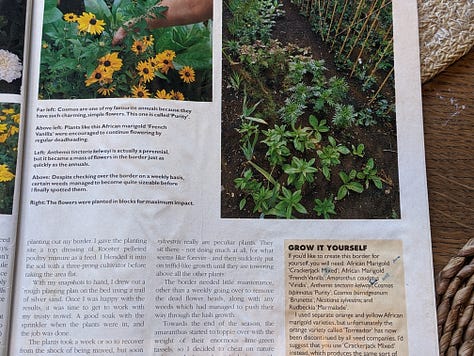
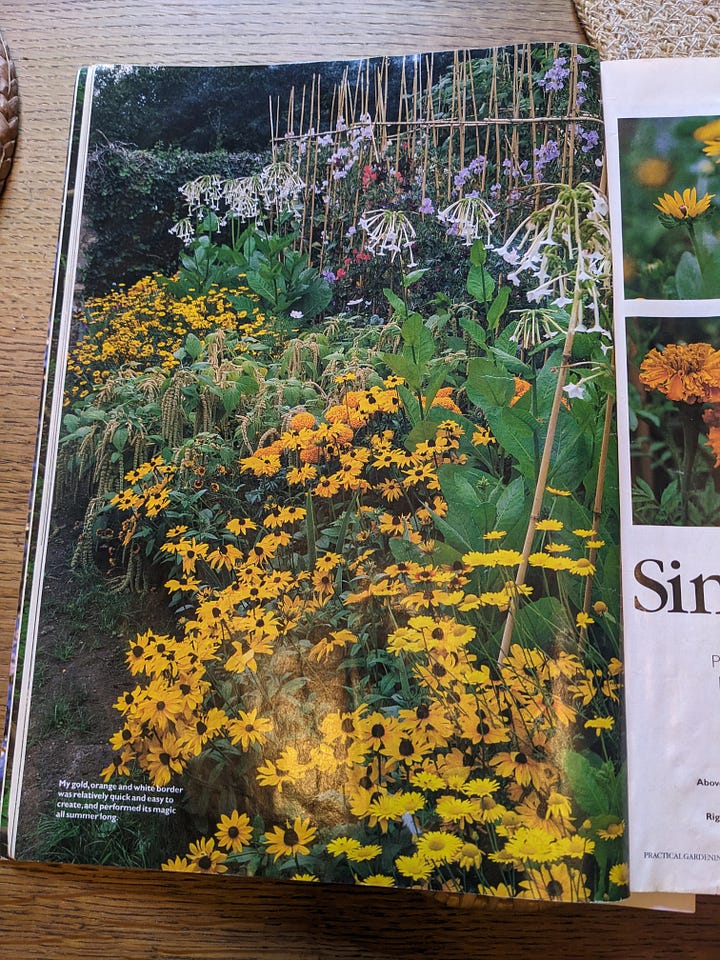
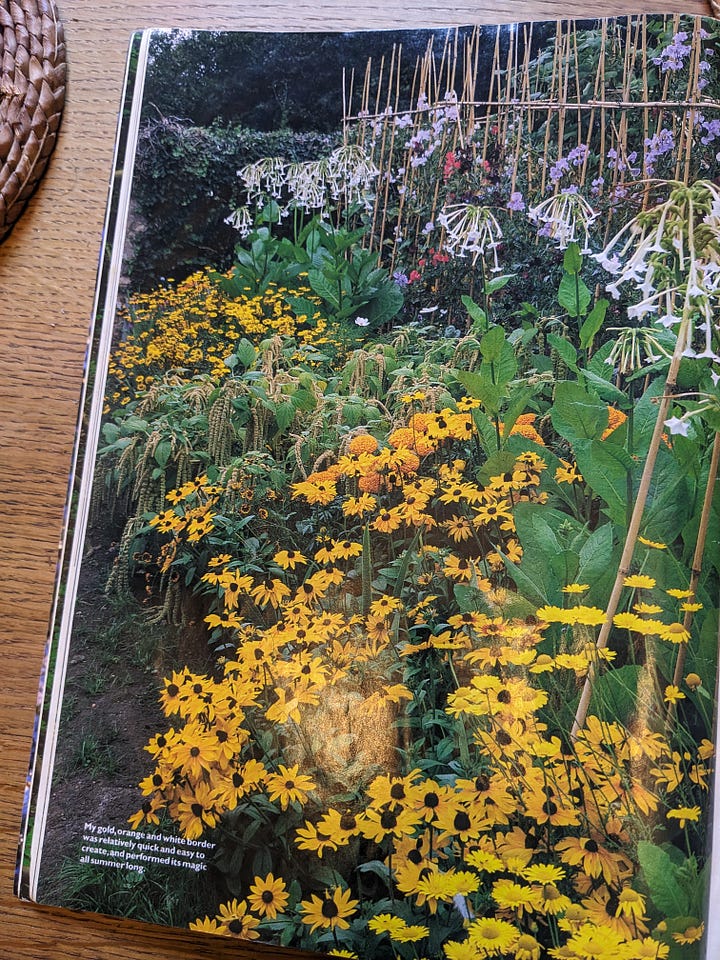
Ceri Thomas 101 Ideas for Pots
Gardeners' World - 101 Ideas for Pots: Foolproof recipes for year-round colour (2007)
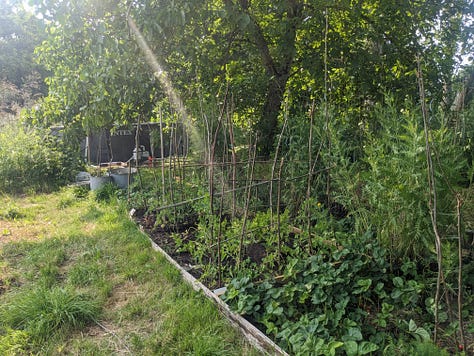
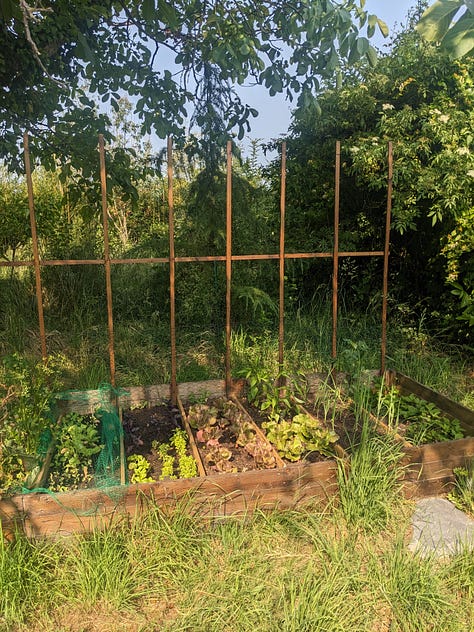


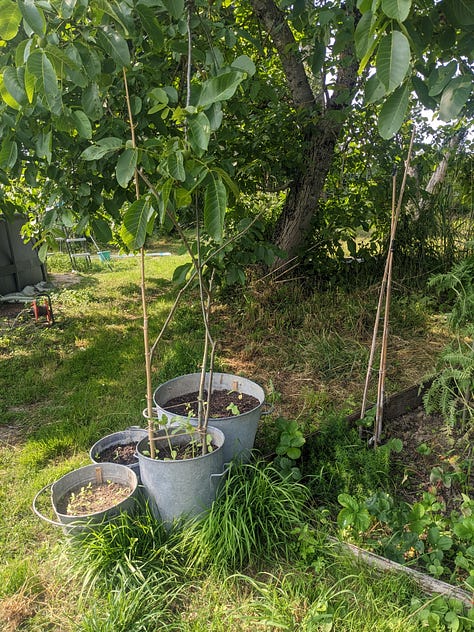

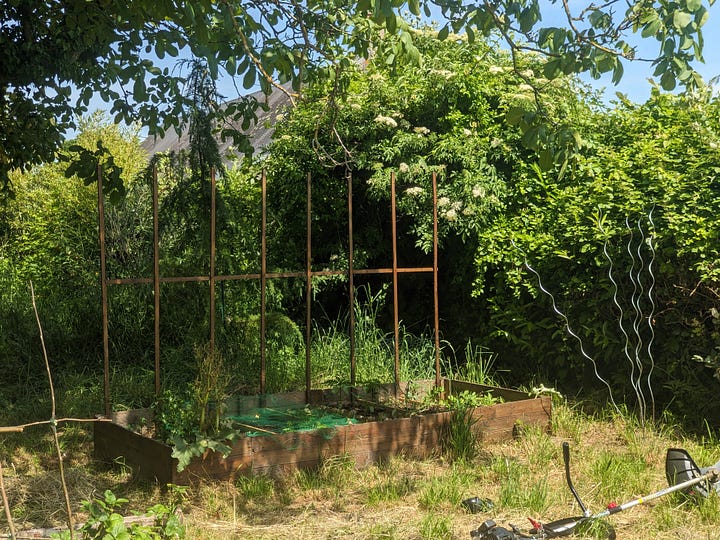

Floral Planting Scheme:
The planting scheme in the magazine article had echinacea, achillae, marigolds, anthemis tinctoria kelway, amaranth, nicotiana sylvestris, but others can be added like the everlasting sunflowers, nasturtiums and feverfew. The dyers chamonile (anthemis) grows well and there are different varieties with varying shades of yellow..
Echinacea and achillea for structure and long flowering
French marigolds and calendula to ward off pests and attract pollinators
Anthemis tinctoria ‘Kelway’ – a dyer's chamomile with golden daisy-like blooms
Nicotiana sylvestris, tall and fragrant by evening
Feverfew and Amaranthus, bringing softness and movement
Everlasting sunflowers, for cheerful brightness
White Cosmos, flowering all summer long
These flowers are more than ornamental. They offer dye, tea, healing, or pest control - blending practicality with elegant planting.
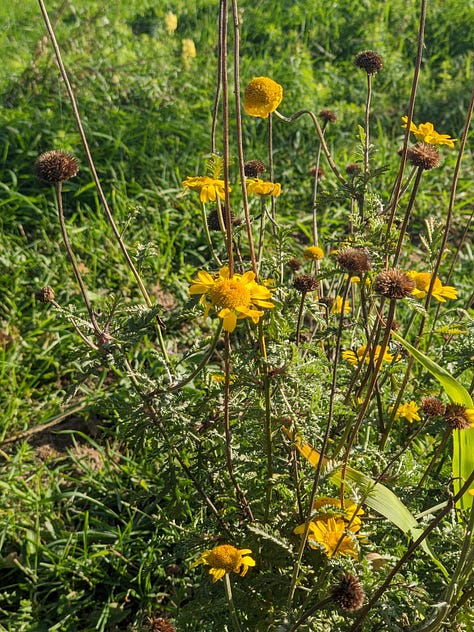
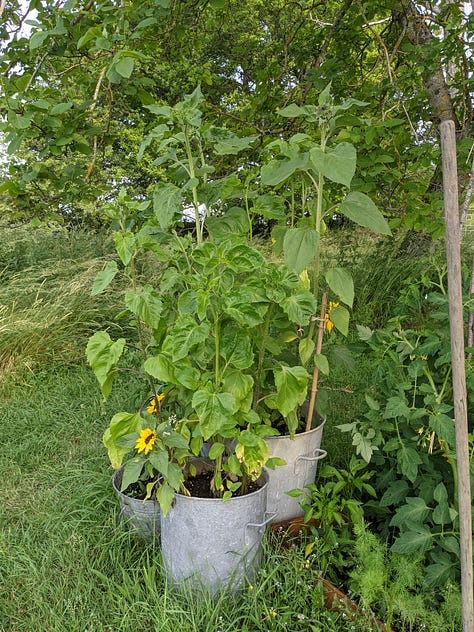



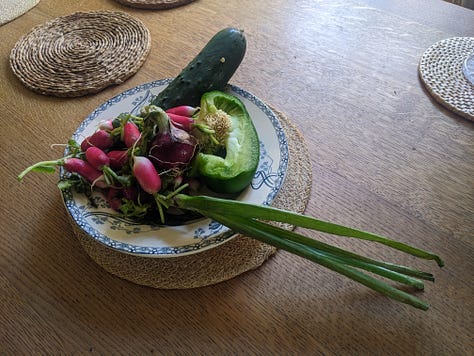
From Plot to Plate
This planting plan not only pleases the eye, it finds its way into the kitchen.
French marigolds deter pests
Calendula petals can be dried for herbal tea, butter, or steeped in oil.
Basil, parsley and nasturtiums nestle around the vegetable bed, with petals and leaves for summer salads
Sunflower seeds can be dried and stored, or left for birds in autumn.
Tomatoes, beans, and cucumbers pair beautifully with the herbs tucked among the flowers
Courgette and lemon jam is on my list to try soon
Tomatoes, basil, onions and nasturtium flowers make a vibrant summer salad
Feverfew and chamomile may be used fresh or dried for teas
Nigel makes chilli jam every year - hot and appreciated as gifts by family and friends.
A Frugal French Garden
What I love about this garden is how affordable and easy it is to grow. Nearly everything was grown from seed or cuttings. Since the first year we had self seeding , and saved seed each year.
The metal tubs were reused from old farming containers. The weed suppressant is old slate roofing tiles.
If you are interested in following the rejuvenation of the potager Nigel made a silent vlog about it on our You Tube channel - French Country Journal: Life through the seasons.
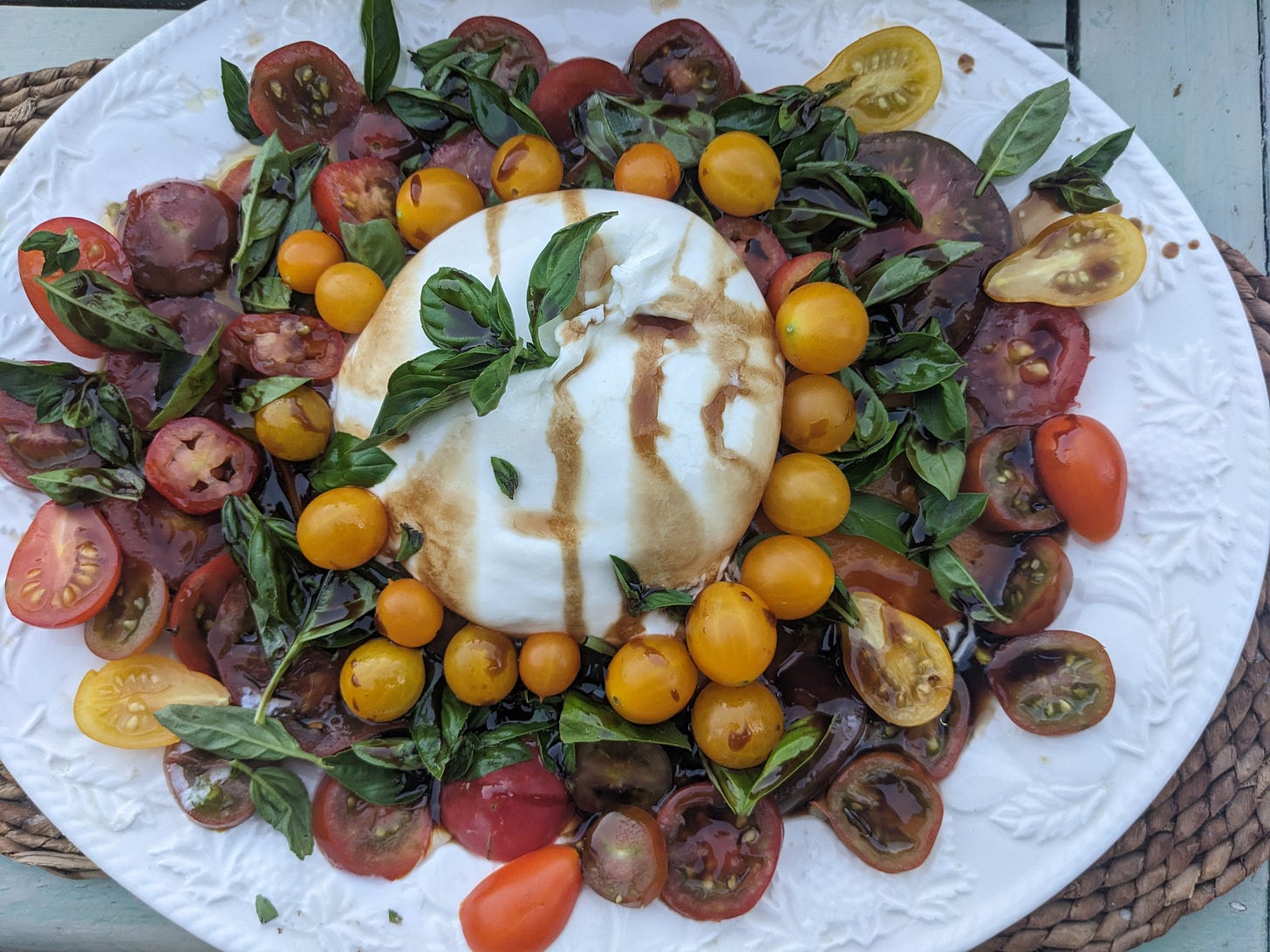
Reflective Moment
"Which plant in my garden brings me the most quiet joy? Can I grow more of it - for myself and the bees?"
I like to have a plan to adapt and it was fun reimagining this design — part vegetable and flower bed.
Forest bathing is wonderful. Being close to nature is for me the best ‘feel good’ tonic. I think there should be a movement advocating “potager pausing.” I know I don’t “stand and stare” enough at the potager and herb garden at Maison des Marguerites. When I do then I feel better, almost instantly. Whether you have a traditional vegetable garden, raised beds, pots and tubs, or a window box then noticing the changes and watching plants grow is mindfulness in action.
So, I hope you enjoyed this insight into our development of a Potager garden in France. If you got this far you may want to subscribe!
At the moment the sunflowers haven’t flowered yet, but the first crop of tomatoes was picked today. Nigel says he may do another video charting the changes over the season. I’ll let you know if that happens.
We almost gave up on this part of the garden, but I’m glad we brought the potager back to life. So I’ll say ‘Au Revoir,” as this post has become much longer than planned!
From a quiet corner of the potager,
Under the wide Berry skies,
With sun on the sunflowers,
In step with the seasons,
With Wishes for a Summer (filled with Sunny Days & Enough Rain,)
Ruth
At Maison des Marguerites
PS. Garden Gate Gatherers meets on 24th July on Zoom. Free. 19:00 CET, Paris, 13:00 hrs EDT, 10:00 PDT, 18:00 hrs London.
It is free - no charge.
We need about 6 Garden Gate Gatherers to make it work as a group. Info below and on the link. If not then I’ll try again in the Autumn when people are back from vacation.
GARDEN GATE GATHERINGS: For fellow gardeners, homesteaders, and those seeking seasonal serenity! Join our community group: Garden Gate Gatherings - it's free and booking is via Eventbrite. The Gatherers has its hub on Substack where you will find details about how to book a place at the rendezvous.
Garden Gate Gathering in July - online
Where and When? Date and Time: 24th July, Time: 19:00 CET Paris, 13:00 hrs EDT, 10:00 PDT, 18:00 hrs London.
Eventbrite: https://www.eventbrite.co.uk/e/garden...
Below are some Thrifty tips linked to out summer potager.
If you enjoy these ideas then there is a Potager to Pantry booklet and a July French Country Journal Calendar with companion booklet available for sale. $4.99
The August Lammastide Booklet and calendar is in preparation, and the plan is to do one of these each month. Follow the link to have a look and see if it is of interest to you.
The project includes these seasonal printables, herb booklets at:
Buy the Booklet and Calendar here
More information about Courses, Workshops and Group rendezvous here
French Country Journal Website
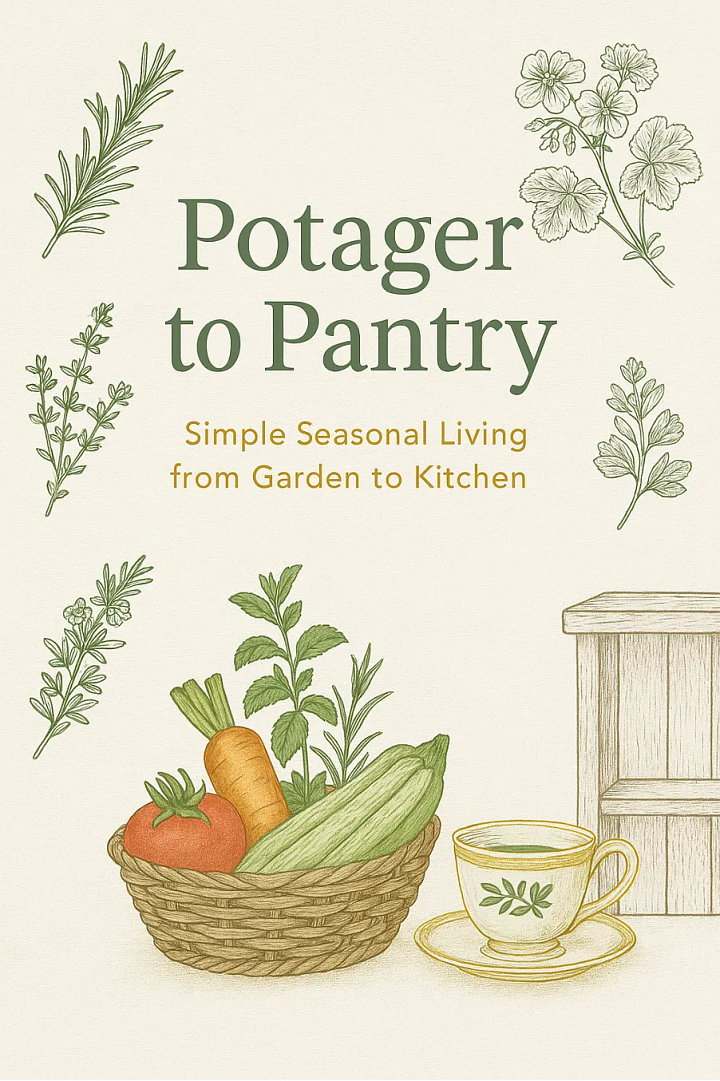

Summer Living Resources
📓 Potager Journal Page – “Bloom, Brew, Preserve”
Your garden notes for the week:
🌱 Planting out seedlings (cosmos):
🐝 Pollinators spotted:
🧺 Harvested this week:
🍶 Preserve or tisane to try:
💬 A quiet moment or garden thought:
🍋 Recipe Card: Courgette & Lemon Confiture
Ingredients:
1 kg grated courgette (zucchini)
Zest and juice of 2 organic lemons
800g sugar
Optional: pinch of grated ginger or cardamom
Instructions:
Place grated courgette and lemon juice/zest in a wide pan. Simmer 10 minutes.
Add sugar and optional spice. Stir until dissolved.
Bring to a gentle boil and cook until thickened, approx. 40–50 minutes.
Pour into sterilised jars. Seal and label.
Pairs beautifully with goat cheese, brioche, or stirred into yoghurt.


